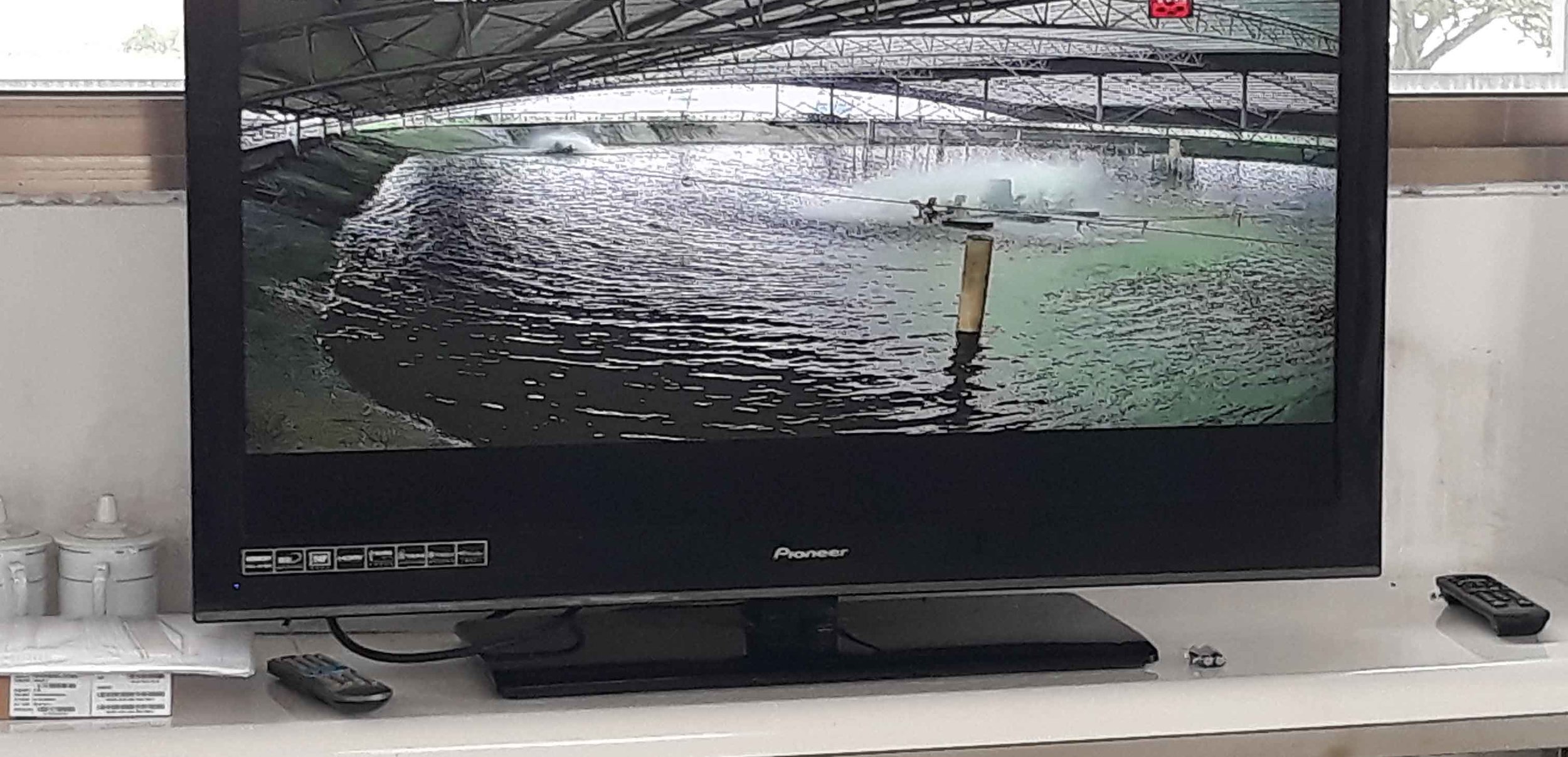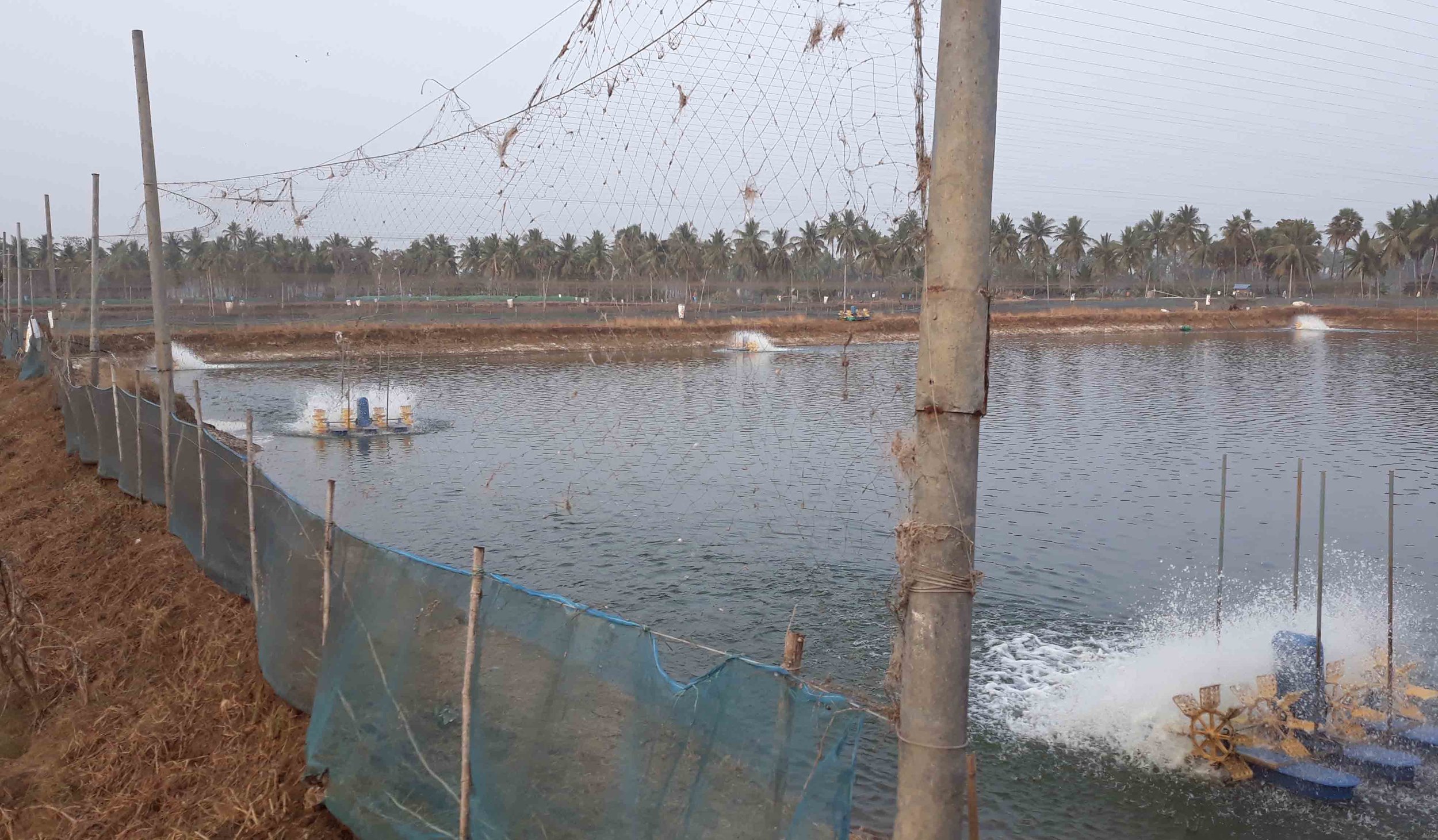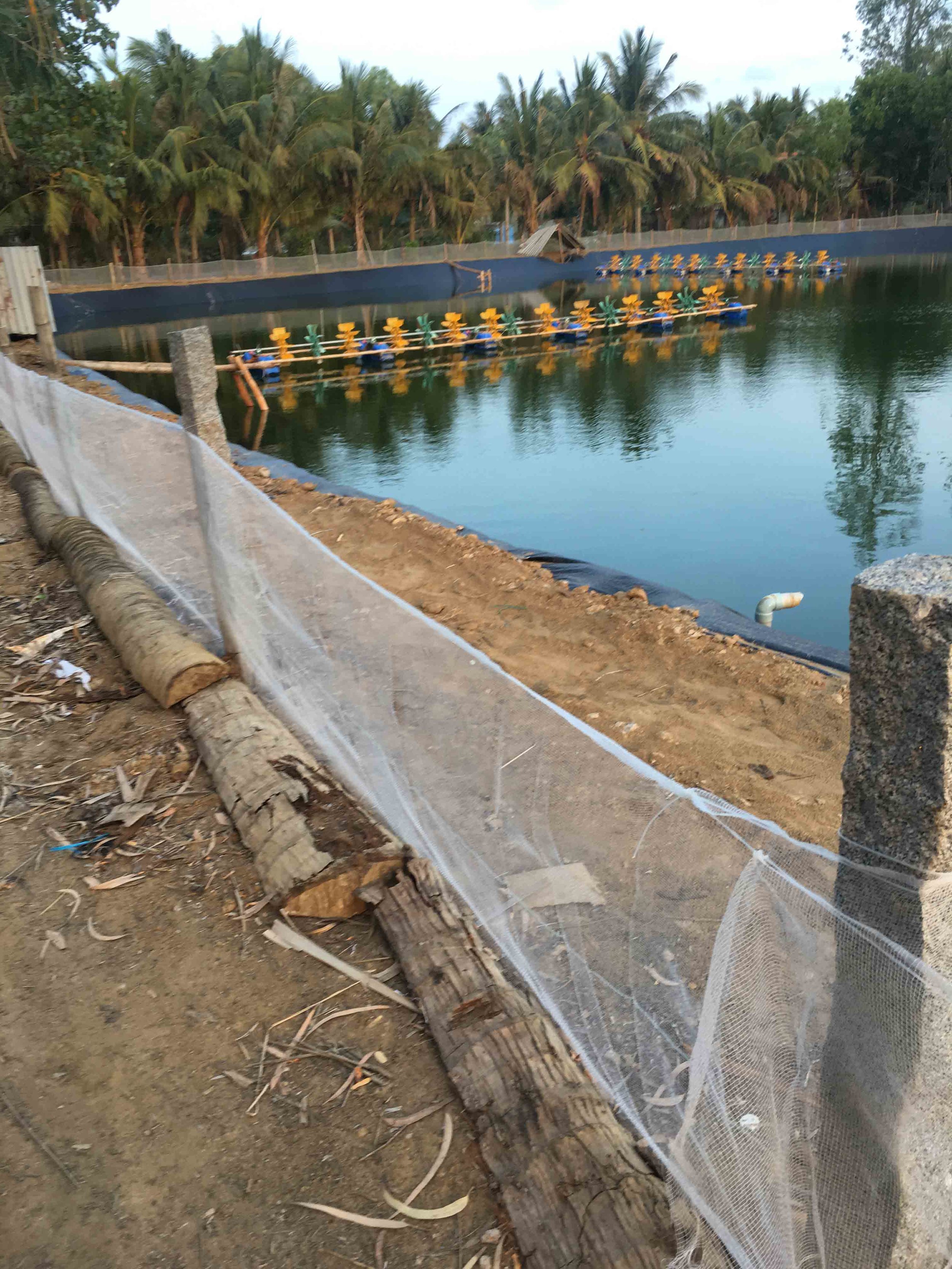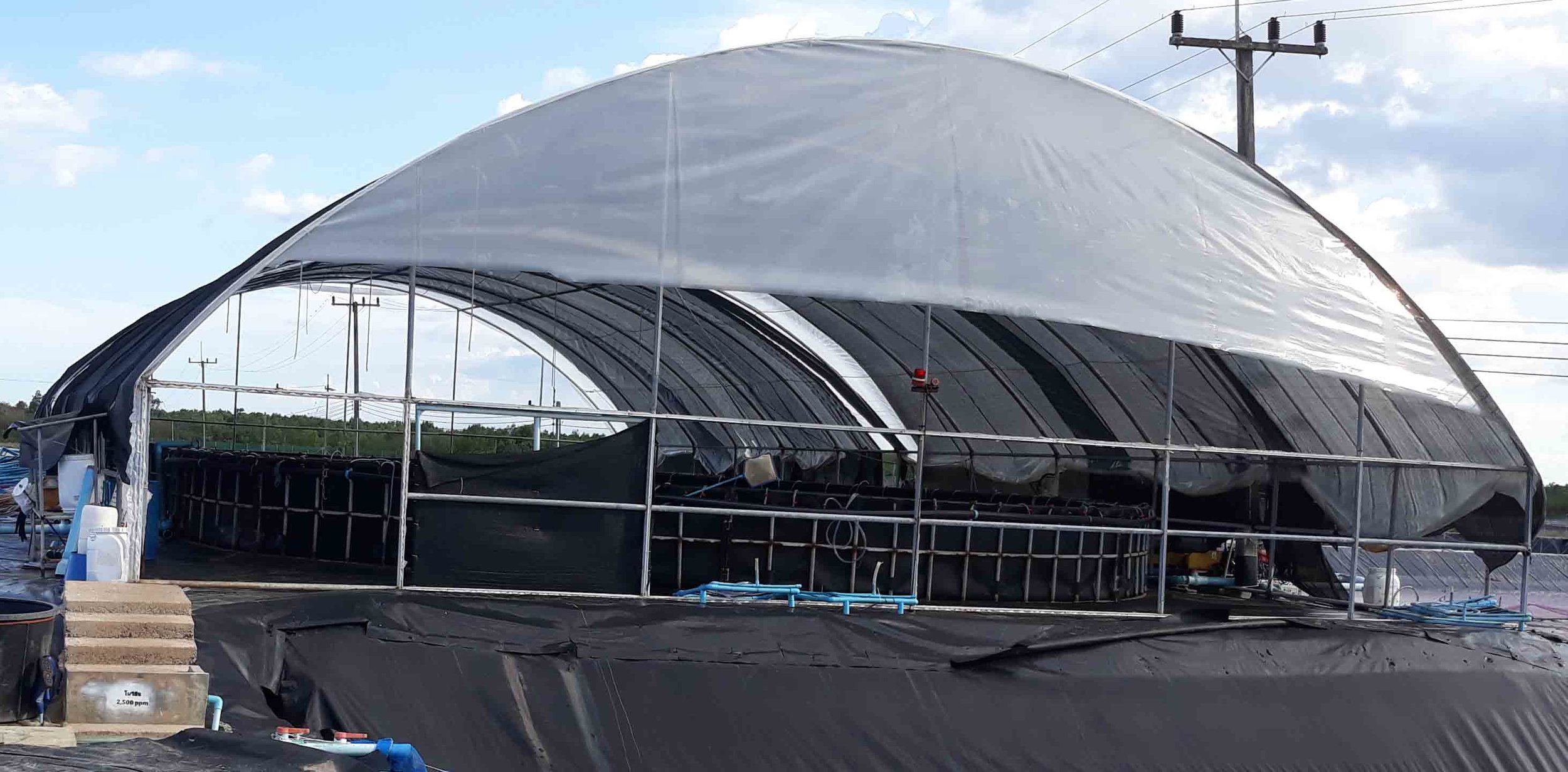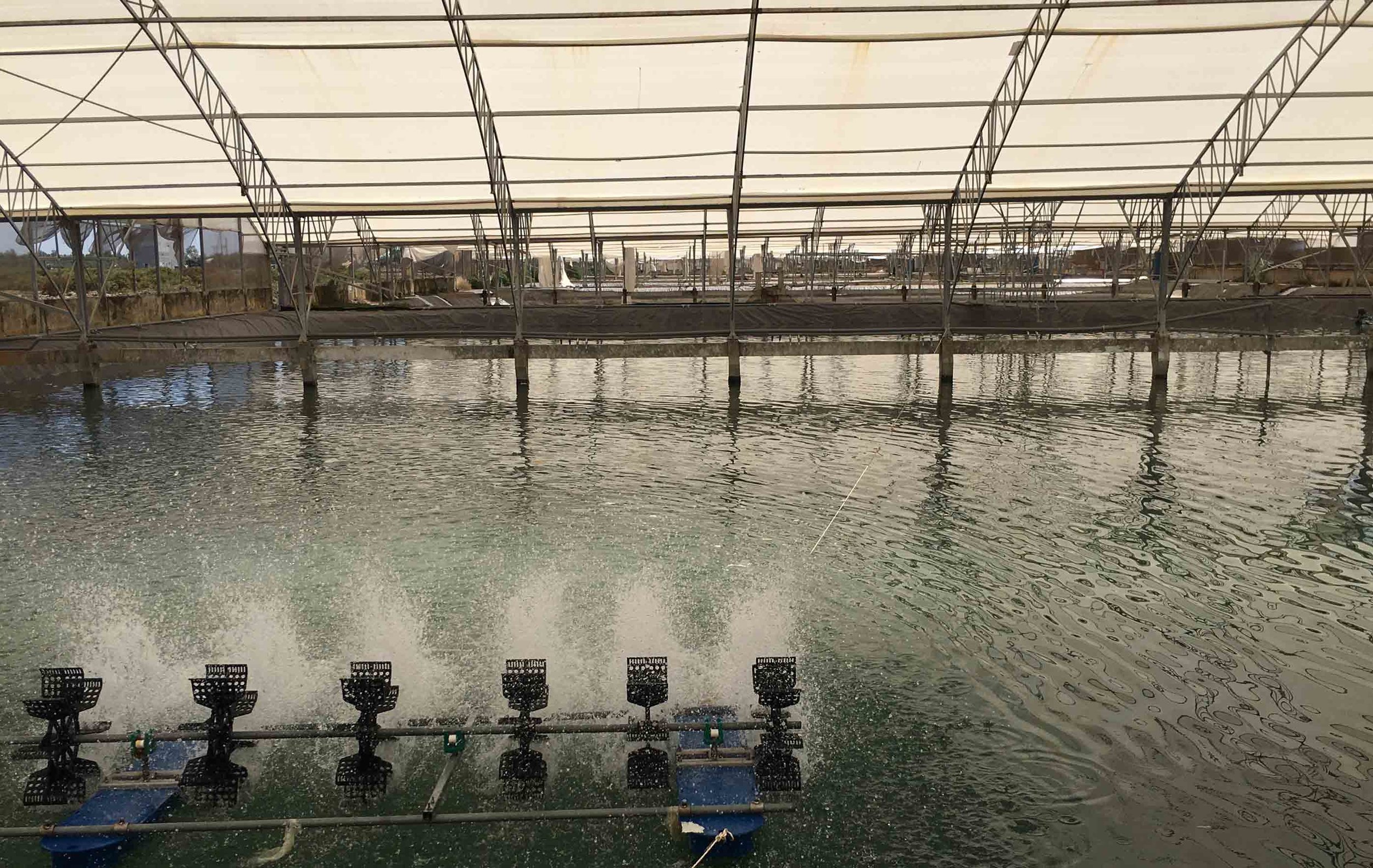BIOSEcurity MEASURES
Some farms include biosecurity measures to improve hygiene, minimize disease and external environmental influences. These include barriers around the perimeter of ponds to deter crabs, dogs, and even humans. Most ponds are unsheltered, but some intensive farms are using plastic or aluminum roofs to deter birds while advanced farmers are farming indoors to have biosecure production facilities and farm with less influence from daily and seasonal external environmental fluctuations. Controlling variables such as water temperature and salinity and excluding harmful pathogens is easier done indoors than outdoors. This is a big advantage to keeping shrimp growth conditions stable and optimal.
Below is a country comparison on farm biosecurity measures.
Category data overview
| www.shrimpfarm.tech by HATCH | Indonesia | India | Ecuador | Thailand | Vietnam | China |
|---|---|---|---|---|---|---|
| CCTV monitoring None, uncommon or common with camera view | None | None | Uncommon | Uncommon, in office or storage | None | Common, on ponds |
| Crab or rat perimeter barriers around ponds None, uncommon or common | Uncommon | None | None | Common | Common | None |
| Human or animal barriers around farms None, uncommon or common | Common | Common | Uncommon | Uncommon | Common | None |
| Bird lines over ponds | None | Common | None | None | None | Uncommon |
| Bird nets over ponds | None | None | None | Common | Uncommon | Uncommon |
| Plastic or aluminium roofing Over ponds or nurseries | Uncommon, over nurseries or ponds | None | None | Uncommon | Uncommon | Uncommon |
| Indoor ponds | Uncommon | None | None | Uncommon | Uncommon | Uncommon |
Summary
Few farmers use CCTV cameras to monitor production ponds, though there is growing trend as mobile phones with cameras with the capacity to use mobile application are increasingly available for online purchase. The CCTV-operating farms are either large corporate farmers or smaller farms managed by young owners. The youngest farm owners in Indonesia and Thailand said they often inspected their operations through livestream CCTV footage on their mobile phones. They also use drones to monitor the tide and turbidity status of their external water supply.
Thai and Vietnamese farmers are more conscientious in terms of keeping small external animals out of their ponds. A few Indonesian farmers use short perimeter barriers around their ponds for the same reason. Almost no farmers use such barriers in India, Ecuador, and China. These barriers would be harder to maintain around large ponds in India and Ecuador, whereas in China, the lack of barriers may be due to old infrastructure and farming methods used by the staff from older generations.
In an attempt to prevent disease from spreading from neighbouring farms, farmers use several methods to deter roaming birds from entering production ponds. Indian farmers commonly assemble long grids of nylon lines elevated above ponds (see pictures below). These grids in India often entirely replaced between crop cycles as lines get dirty and obstruct harvesting activities. The grids, however, do not prevent birds from dropping potentially contaminated shrimp that is semi-eaten into the ponds. Thus, this barrier method is no longer popular in other countries. Instead, farmers install full bird nets. These nets are popular on Thai farms but are less common in Vietnam and China. No farmers currently install these nets over ponds in Indonesia, India, and Ecuador.
To prevent drastic fluctuations in daily temperature and also to act as an added defence against birds, modern farmers use elevated thick nylon shaded sheets or corrugated aluminium roofing to cover grow-out ponds and nurseries. While the extra capital investment required for this is less common, it is gradually becoming more popular.
The next level of biosecurity and environmental control is farming indoors in aluminium-framed and plastic sealed tunnels with either plastic or steel roofs. This eliminates almost all risk of potential pathogens being transferred into production ponds that are carried by animals or humans. While recognizing the benefit pathogen transfer, the main benefit is still to eliminate environmental fluctuations caused by external temperature and rainfall. These systems become more advanced with added investments. Only large corporate farmers were seen to farm shrimp in indoor grow-out ponds while smaller farmers are limited to only indoor nursery tanks and ponds
Innovation opportunities
In general, backyard and small scale farmers have poor biosecurity. The primary source of pathogens originates from shared water supply sources so farmers need better solutions to filter, treat and eliminate potential harmful pathogens from populating their grow-out ponds. Alternatively, being able to balance beneficial microbial communities to an extent to outcompete harmful bacteria is becoming a growing tread with the use of periodically dosing ponds with probiotics. However farmers are not able to readily measure this and so higher level of control and monitoring of the microbial status of production water needs to be provided to farmers. This would enable farmers to regulate when and how much water needs to be pumped, filtered, treated, or recirculated between their ponds prior to production.
Surveillance
Bird Prevention
Barriers against animals and people
Pond covering
INdoor ponds








